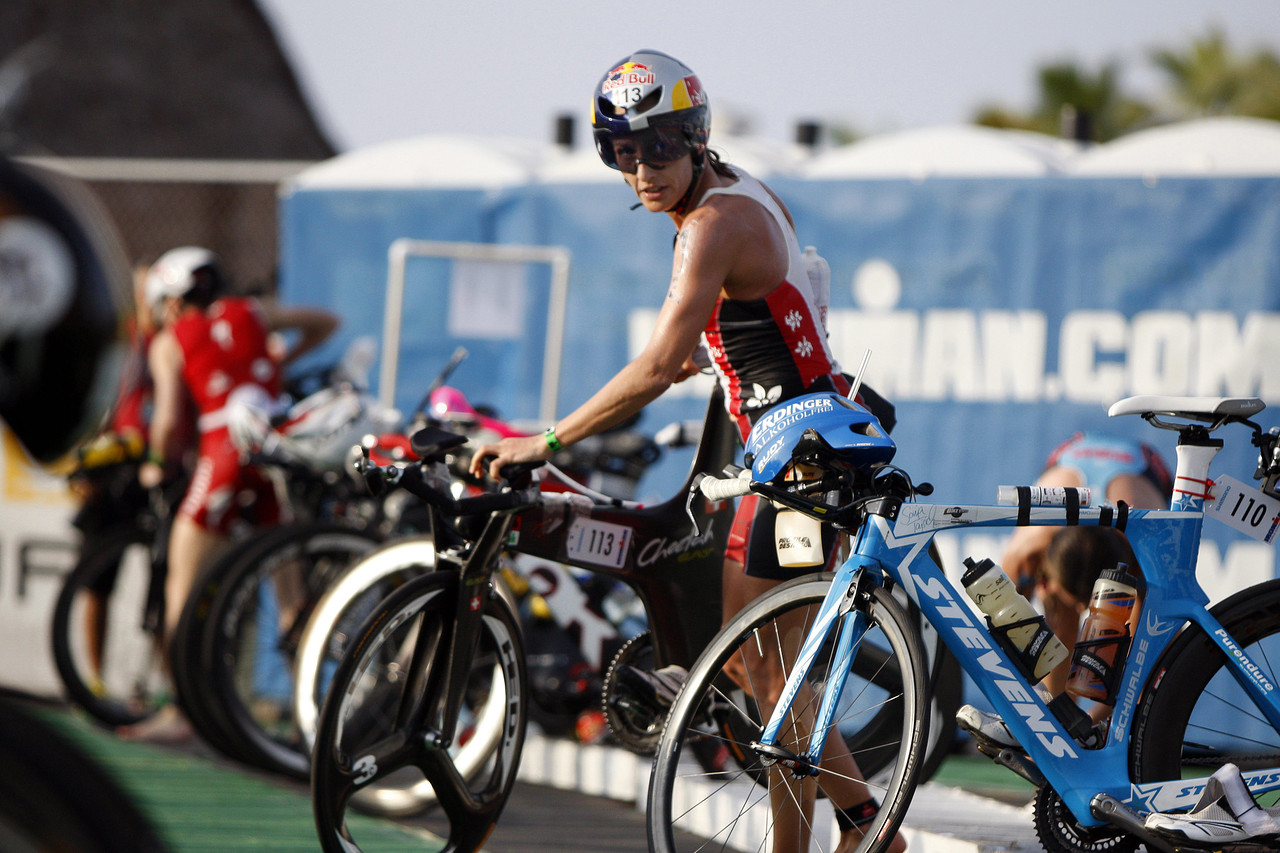Home>Misc>Featured>When Considering An Exercise Order, What Should Be A Priority Before Completing Accessory Exercises


Featured
When Considering An Exercise Order, What Should Be A Priority Before Completing Accessory Exercises
Modified: January 2, 2024
Make the right exercise order a priority for effective workouts. Discover why prioritizing featured exercises before accessories is crucial for fitness success.
Introduction
When it comes to creating an effective workout routine, exercise order is a crucial consideration. The order in which you perform your exercises can have a significant impact on your overall workout experience and results. While it may seem like a trivial detail, prioritizing certain exercises over others can make a world of difference in terms of muscle activation, fatigue, and injury prevention.
So, what should be a priority before completing accessory exercises? In this article, we will delve into the various factors to consider when determining exercise order. By understanding these considerations, you can optimize your workout routine and achieve better results.
The primary goal of exercise order is to maximize the benefits of each exercise and ensure that you are effectively targeting the desired muscle groups. By strategically selecting the order of your primary exercises, you can prime your muscles for optimal growth and performance. Additionally, knowing how to incorporate accessory exercises after your primary lifts can help to further enhance muscle development and improve your overall fitness level.
However, before jumping into the specifics of exercise order, it is crucial to have a solid foundation of proper form and technique. Without proper execution, any exercise can be ineffective and potentially put you at risk of injury. Therefore, always prioritize learning and perfecting the correct form for each exercise before considering exercise order or adding weights.
In the following sections, we will explore the key considerations to keep in mind when determining exercise order. By understanding these factors and applying them to your workout routine, you can maximize your gains, minimize the risk of injury, and achieve your fitness goals more efficiently.
Importance of Exercise Order
The order in which you perform your exercises plays a crucial role in the effectiveness of your workout routine. Exercise order is important for several reasons:
- Muscle activation: The order of exercises can influence which muscles are activated first and to what degree. Beginning your workout with compound exercises that target multiple muscle groups can help to activate and engage more muscles simultaneously. This can lead to greater overall muscle recruitment and stimulate more muscle fibers, resulting in more efficient muscle growth and strength development.
- Fatigue management: The order in which you perform exercises can also impact how fatigued your muscles become during your workout. Placing heavy compound exercises early in your routine when you are fresh and have more energy can allow you to lift heavier weights and target larger muscle groups more effectively. This can help to optimize performance and minimize the risk of injury caused by fatigue.
- Energy system utilization: Different exercises and workout strategies can target specific energy systems within your body. Incorporating exercises that target different energy systems or utilize different energy sources can create a well-rounded and balanced workout. This can help to enhance your overall endurance, improve cardiovascular health, and contribute to the diversity of your training regimen.
- Variety and mental engagement: Varying your exercise order can add freshness and excitement to your routine. Breaking away from the same set pattern can keep you mentally engaged and motivated to continue challenging yourself. It can also provide a change of pace and prevent boredom, which is essential in maintaining long-term adherence to your exercise program.
Understanding the importance of exercise order allows you to strategically plan your workouts to achieve your specific goals. By selecting exercises that target the desired muscle groups, manage fatigue, optimize energy system utilization, and provide variety, you can create a well-rounded and effective workout routine.
Primary Exercise Selection
Choosing the right primary exercises lays the foundation for your workout routine. These exercises typically involve compound movements that engage multiple muscle groups and require a significant amount of strength and coordination. With proper primary exercise selection, you can target specific muscle groups, improve overall strength, enhance athletic performance, and promote functional movement patterns.
When selecting primary exercises, consider the following factors:
- Training goals: Identify your specific training goals, whether it’s building muscle mass, increasing strength, improving power, or enhancing endurance. Different exercises stimulate different adaptations, so choose primary exercises that align with your goals. For example, if your focus is on building chest muscles, primary exercises like bench press or push-ups would be appropriate choices.
- Compound exercises: Prioritize compound exercises over isolation exercises when selecting primary exercises. Compound exercises utilize multiple muscle groups and joints, making them highly effective for overall muscle development and functional fitness. Examples include squats, deadlifts, pull-ups, and shoulder presses.
- Balance and symmetry: Ensure that your primary exercises provide a balanced and symmetrical workout that targets all major muscle groups. Neglecting certain muscle groups can lead to muscular imbalances and increase the risk of injury. Include exercises that target opposing muscle groups, such as chest and back or biceps and triceps, to maintain muscular balance.
- Progressive overload: Primary exercises should allow for progressive overload, which involves gradually increasing the intensity, volume, or difficulty of your workouts. This stimulates muscle growth and improves strength over time. Choose exercises that can be easily modified by adjusting weight, reps, or resistance to continue challenging your muscles.
- Personal preferences and limitations: Consider your personal preferences, interests, and any physical limitations when selecting primary exercises. Enjoying the exercises you do is crucial for long-term adherence. Additionally, if you have any injuries or movement restrictions, choose exercises that can be performed safely and effectively without exacerbating those conditions.
By carefully considering your training goals, incorporating compound exercises, maintaining balance and symmetry, incorporating progressive overload, and factoring in personal preferences and limitations, you can select primary exercises that align with your specific needs and maximize the effectiveness of your workout routine.
Considerations Before Accessory Exercises
Accessory exercises are additional exercises performed after the primary exercises to target specific muscle groups, address weaknesses, improve muscular endurance, or enhance overall muscular development. While accessory exercises can be valuable additions to your workout routine, there are several important considerations to keep in mind before incorporating them.
- Proper form and technique: Just like with primary exercises, ensuring proper form and technique is crucial when performing accessory exercises. Take the time to learn the correct execution of each exercise and focus on maintaining proper form to prevent injuries and reap the maximum benefits of the exercises.
- Muscle activation and fatigue: Before adding accessory exercises, it’s important to consider the current state of your muscles. Primary exercises place significant stress on the muscles, and depending on the intensity of your workout, those muscles may already be fatigued. Take into account the level of muscle activation and fatigue from the primary exercises when selecting accessory exercises. It may be beneficial to include accessory exercises that target different muscle groups or provide active recovery for the primary muscles worked.
- Injury prevention: Consider any weaknesses or imbalances in your body and choose accessory exercises that help address those areas. If you have specific muscle groups that are prone to injury, focus on exercises that strengthen and stabilize those areas. It’s crucial to prioritize injury prevention and overall joint health when selecting your accessory exercises.
- Training goals and priorities: Align your choice of accessory exercises with your training goals and priorities. If your goal is to increase muscular endurance or target specific muscle groups, choose exercises that directly address those objectives. Alternatively, if strength or power development is your main focus, select accessory exercises that complement your primary exercises and aid in reaching those goals.
- Variety and progression: Incorporate variety into your accessory exercises to keep your workouts stimulating and prevent plateauing. Aim to target different muscle groups and utilize different movement patterns with your accessory exercises. Additionally, ensure that you progressively overload these exercises over time as well. Increase the weight, intensity, or volume gradually to continue challenging your muscles and promoting further growth and development.
By taking these considerations into account, you can effectively select and incorporate accessory exercises that complement your primary exercises and align with your goals. This will help you enhance overall muscle development, address weaknesses, prevent injuries, and optimize your workout routine.
Proper Form and Technique
When it comes to exercise, proper form and technique are paramount. Correct form ensures that you are engaging the targeted muscles properly, maximizing the effectiveness of the exercise, and reducing the risk of injury. Before considering any other factors, prioritizing proper form and technique should be at the top of your list.
Here’s why proper form and technique are so crucial:
- Muscle Activation: Performing exercises with proper form ensures that you are activating the intended muscles to their fullest potential. By utilizing the correct movement patterns and maintaining proper alignment, you can effectively target the desired muscle groups and elicit maximum muscle recruitment.
- Injury Prevention: Proper form helps to minimize the risk of injury during exercise. When you perform exercises with poor form or technique, you put undue stress on joints, ligaments, and muscles, increasing the likelihood of strains, sprains, or more severe injuries. By focusing on form and technique, you can prevent common exercise-related injuries and train safely.
- Efficiency and Effectiveness: Proper form ensures that you are getting the most out of each exercise. By executing the movements correctly, you can optimize muscle activation and engagement, leading to better results. Even if you lift lighter weights or perform fewer repetitions with proper form, you’ll achieve better outcomes than if you were to use improper form and push for higher weights or more reps.
- Long-term Progression: Establishing a strong foundation of proper form and technique sets you up for long-term success in your fitness journey. As you progress and increase the difficulty of your workouts, having the correct form ingrained will allow you to continually challenge yourself safely and effectively. Proper form serves as a basis for gradual and sustainable progression.
To ensure proper form and technique, it’s essential to prioritize quality over quantity. Take the time to learn the correct form for each exercise, seeking guidance from qualified professionals if needed. Practice the movements with light weights or empty bars to master the technique before adding additional resistance.
Pay attention to your body positioning, joint alignment, and movement execution during each exercise. Engage the targeted muscles and avoid relying on momentum or compensatory movements to complete the exercise. Use smooth and controlled movements, and always maintain proper breathing throughout the exercise.
Remember, safety and effectiveness should always be the main focus when it comes to exercise. By prioritizing proper form and technique, you can optimize muscle activation, prevent injuries, maximize efficiency, and create a solid foundation for long-term progression in your fitness journey.
Muscle Activation and Fatigue
The order in which you perform exercises can have a significant impact on muscle activation and fatigue. Understanding how exercise order affects these factors can help you optimize your workout routine and achieve better results.
Here’s why muscle activation and fatigue should be considered in exercise order:
By considering muscle activation and fatigue in exercise order, you can design a workout routine that optimizes muscle engagement, minimizes fatigue-induced performance decline, prioritizes specific muscle groups, allows for heavy lifting, and facilitates balanced workout sessions.
Injury Prevention
One of the most important considerations when determining exercise order is injury prevention. Incorporating exercises in the correct order can help minimize the risk of injuries and promote safe and effective workouts. Here’s why injury prevention should be a priority:
- Muscle Activation and Proper Form: Performing exercises with proper form and activating the correct muscle groups is crucial for injury prevention. Starting your workout with compound exercises that require a greater range of motion and engage multiple muscle groups can help warm up your muscles, increase blood flow, and improve joint mobility, reducing the risk of strains or sprains.
- Joint Stabilization: Strengthening and stabilizing the muscles around your joints is key to preventing injuries. By targeting the muscles that surround your joints, such as the rotator cuff muscles in the shoulders or the muscles that stabilize the knees, you can improve joint stability and reduce the risk of joint-related injuries.
- Preventing Muscle Imbalances: Imbalances between muscle groups can increase the likelihood of injuries. By incorporating exercises that target opposing muscle groups in a balanced manner, such as training the quads and hamstrings or the chest and back, you can correct imbalances and improve overall muscle symmetry and function.
- Gradual Progression: It is important to progress gradually and avoid sudden increases in training volume or intensity. Rushing through your workout, lifting weights that are too heavy, or increasing the difficulty of exercises too quickly can lead to overexertion, muscular imbalances, and increased risk of injury. It’s crucial to give your body time to adapt and gradually increase the demands you place on it.
- Listening to Your Body: Paying attention to your body’s signals and listening to any signs of pain or discomfort is essential for injury prevention. Pushing through pain or ignoring warning signs can lead to further damage and long-term setbacks. Be mindful of any joint pain, muscle strains, or discomfort and modify your exercises accordingly. Consulting with a healthcare or fitness professional can provide valuable guidance in injury prevention and rehabilitation.
Prioritizing injury prevention through proper exercise order can help you significantly reduce the risk of injuries, allowing you to maintain a consistent and progressive workout routine. By focusing on muscle activation, proper form, joint stability, balance, gradual progression, and listening to your body, you can create a safe and injury-free training environment.
Training Goals and Priorities
When considering exercise order, it’s important to align it with your specific training goals and priorities. The exercises you choose to prioritize in your workout routine should directly contribute to your desired outcomes. Here’s why training goals and priorities should guide exercise order:
- Specific Muscle Emphasis: If your goal is to focus on developing specific muscle groups, prioritizing exercises that target those muscles is essential. For example, if your goal is to build a stronger chest, starting your workout with compound chest exercises like bench press or push-ups can allow you to exert more energy and effort into those muscles.
- Functional Movement Patterns: Consider the functional movement patterns that are relevant to your goals. Prioritizing exercises that mimic real-life movements can enhance your overall athletic performance and functional fitness. For instance, incorporating squats, lunges, and deadlifts, which replicate movements like bending, lifting, and stepping, can benefit both sports performance and daily activities.
- Strength and Power Development: If increasing strength or power is a priority, starting your workout with compound exercises that require significant strength and power output is recommended. By focusing on heavy lifts like squats or deadlifts first, you’ll be able to exert maximum effort and target major muscle groups that contribute to overall strength gains.
- Endurance Training: For endurance training, incorporating exercises that improve muscular endurance is crucial. Prioritizing exercises that engage multiple muscle groups and involve prolonged contractions, such as circuit training or interval training, can help improve cardiovascular fitness and muscular stamina.
- Balanced Workout: Strive for a well-rounded workout routine that addresses all major muscle groups and movement patterns. Consider exercises that target opposing muscle groups, such as chest and back or biceps and triceps, to maintain muscular balance. This helps prevent muscular imbalances, enhances overall symmetry, and reduces the risk of injuries.
By aligning your exercise order with your training goals and priorities, you can ensure that you are maximizing the effectiveness of your workout routine. Customizing your exercise selection based on specific muscle emphasis, functional movement patterns, strength and power development, endurance training, and maintaining overall balance will help you progress towards your desired outcomes more effectively.
Conclusion
Exercise order is a critical component of a well-designed workout routine. By understanding the factors to consider when determining exercise order, you can optimize your workouts and achieve better results. Prioritizing proper form and technique lays the foundation for safe and effective exercise execution. Considering muscle activation and fatigue helps you choose the right exercises to maximize muscle recruitment while managing fatigue levels. Injury prevention should always be a priority, focusing on proper form, joint stability, and addressing muscle imbalances. Aligning exercise order with your training goals and priorities ensures that you are targeting specific muscle groups and working towards your desired outcomes.
Remember, there is no one-size-fits-all approach to exercise order. It’s important to assess your individual needs, abilities, and goals when designing your workout routine. By keeping these key considerations in mind, you can tailor your exercise order to optimize muscle activation, prevent injuries, and work towards your specific goals.
Before embarking on any new exercise program, it’s always advisable to consult with a qualified fitness professional who can provide personalized guidance and ensure that you are performing exercises safely and effectively. With proper exercise order and a well-rounded workout routine, you can elevate your fitness journey and achieve the results you desire. So, take the time to plan and organize your exercises strategically, and enjoy the benefits of an optimized workout routine.









